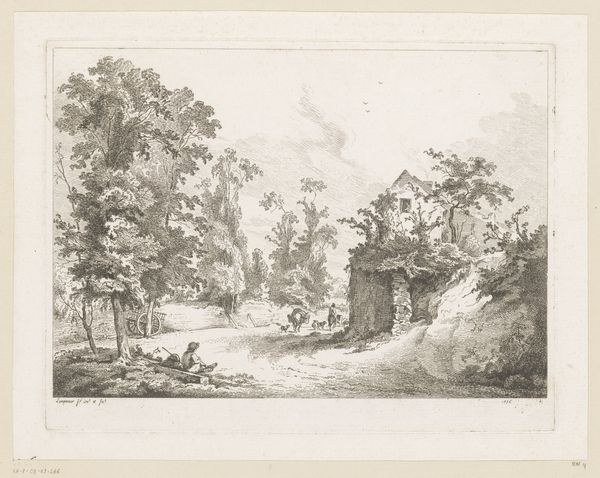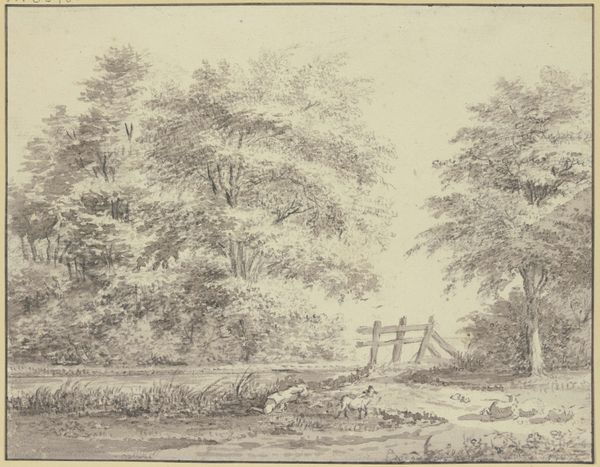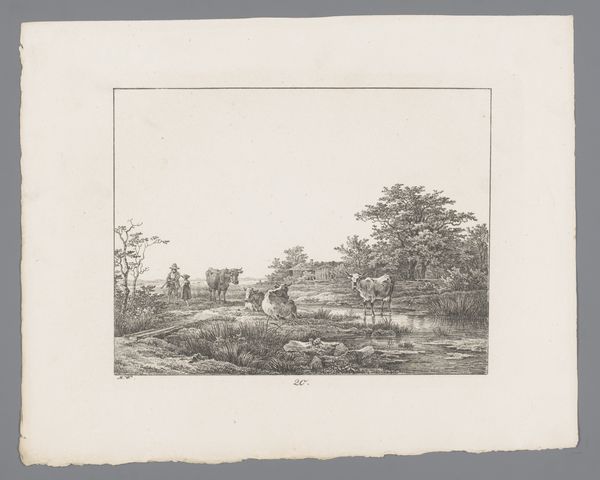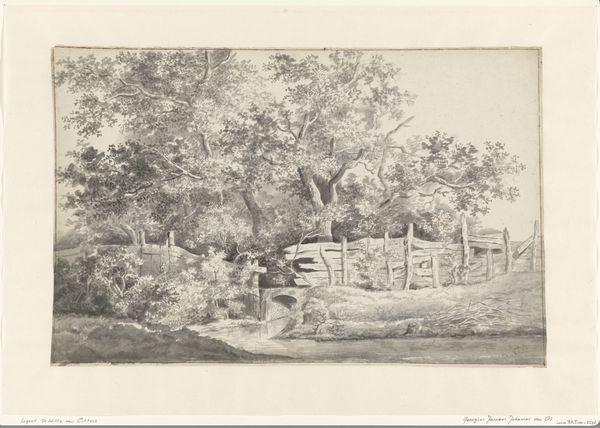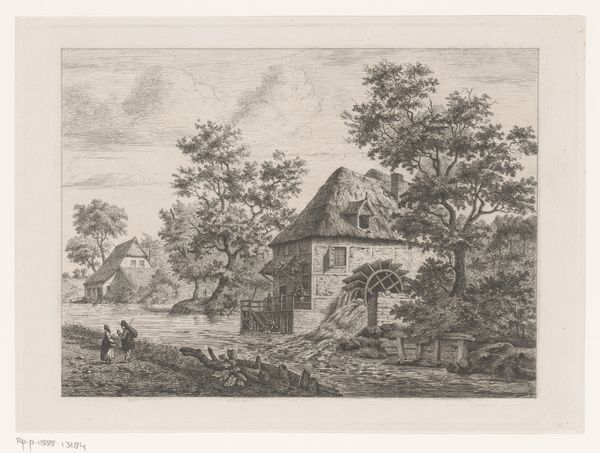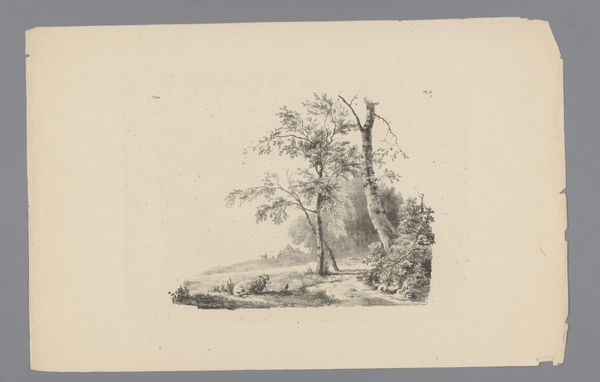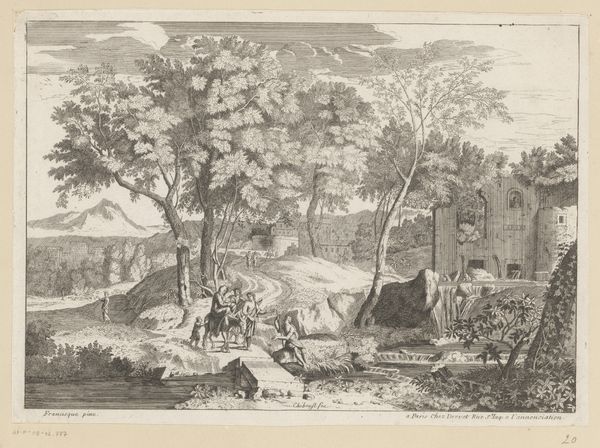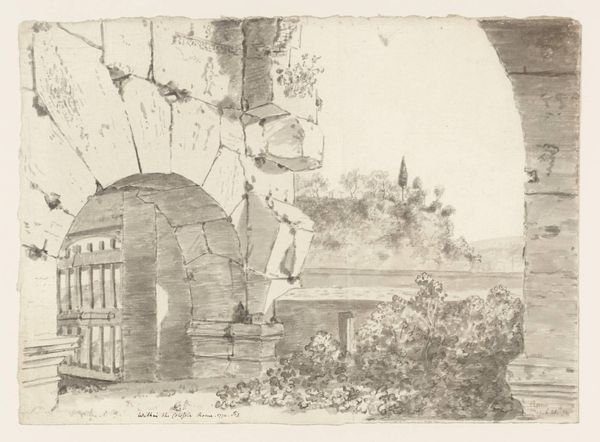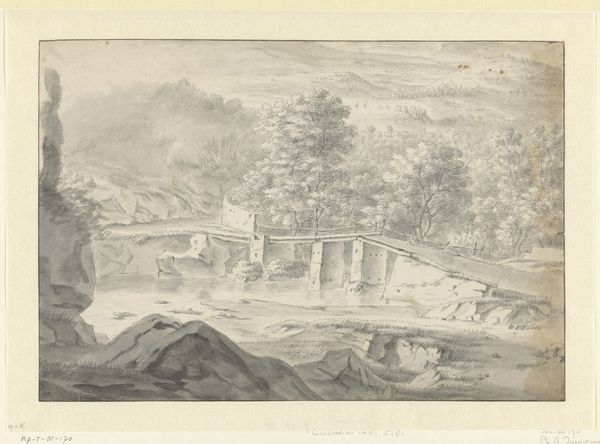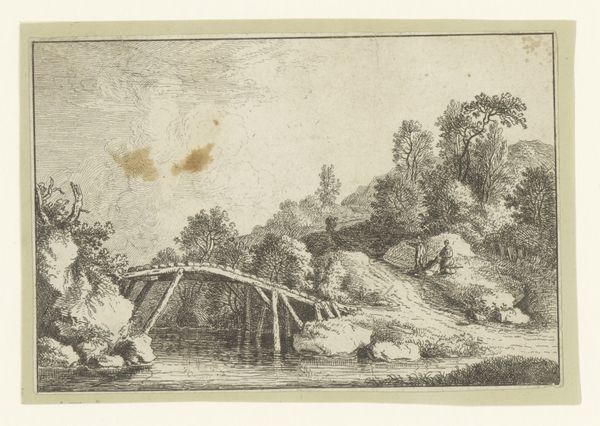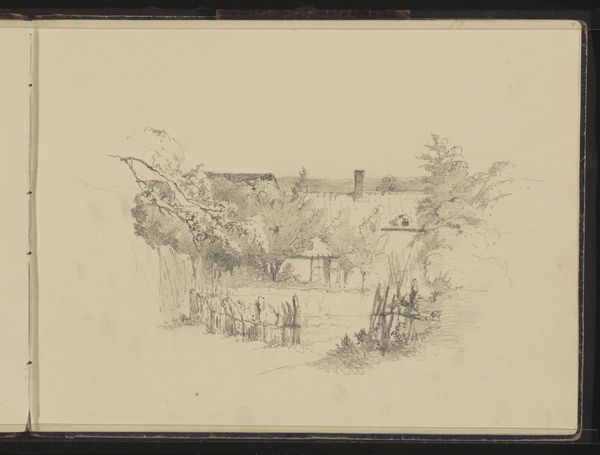
drawing, pencil
#
drawing
#
pencil sketch
#
landscape
#
river
#
pencil
#
realism
Dimensions: height 246 mm, width 333 mm
Copyright: Rijks Museum: Open Domain
Curator: The overwhelming feeling here is of quiet industry, would you agree? There’s an understated connection to nature, particularly water. Editor: Yes, there is that stillness about it. Before we delve too deep into subjective experience, let's orient our listeners. This is "Landschap met een man die uit een schuur komt," or "Landscape with a Man Coming out of a Shed," a pencil drawing by Johannes Petrus Waterloo, created sometime between 1800 and 1870. Curator: "Landscape" is almost an understatement. It’s the figure emerging from the shed that really holds my attention. The shed itself is rather primitive in construction. Its dark doorway echoes universal concepts of birth, the threshold, initiation… I feel that simple structure taps into much more primal territory. Editor: I see your point about that “dark doorway.” It reminds me a little of similar, slightly later images we find associated with the emerging industrial age, where rural life is often either sentimentalized or, conversely, is cast in terms of the primitive to make way for ideas of ‘progress’. The artist’s emphasis on realism – just look at the detail of the trees, and their mirror images in the river - contrasts with that quite crude building, almost suggesting decay. The question for me is: Is it an idealized depiction of Dutch rural life, or a reflection on the decline of that very way of life? Curator: Perhaps both? I find it significant that the human figure is placed directly in that doorway, bridging the structure, embodying the transition between what’s within and without, a nexus where the viewer might be expected to pause and meditate. There are a couple of boats at the ready, but also a toppled wooden cart – tools ready for work and maybe relics of it, abandoned too. Editor: Those fallen, aged timbers, that abandoned cart, do hint at transition, indeed. The little detail of a distant church spire adds another layer too. It places it, as a historical artifact within a particular moment. One poised between traditional agriculture and larger social changes, as you implied earlier. Curator: Yes, there is so much quiet complexity captured here through such humble materials: pencil on paper. Waterloo asks us to witness more than just a man emerging from a shed; he prompts us to contemplate humanity’s relationship with shelter, work, nature, and spiritual continuity. Editor: Agreed. Waterloo’s work becomes more interesting, the longer you examine it, precisely because it speaks to multiple social registers in quite a muted fashion. Thank you for that compelling interpretation.
Comments
No comments
Be the first to comment and join the conversation on the ultimate creative platform.

